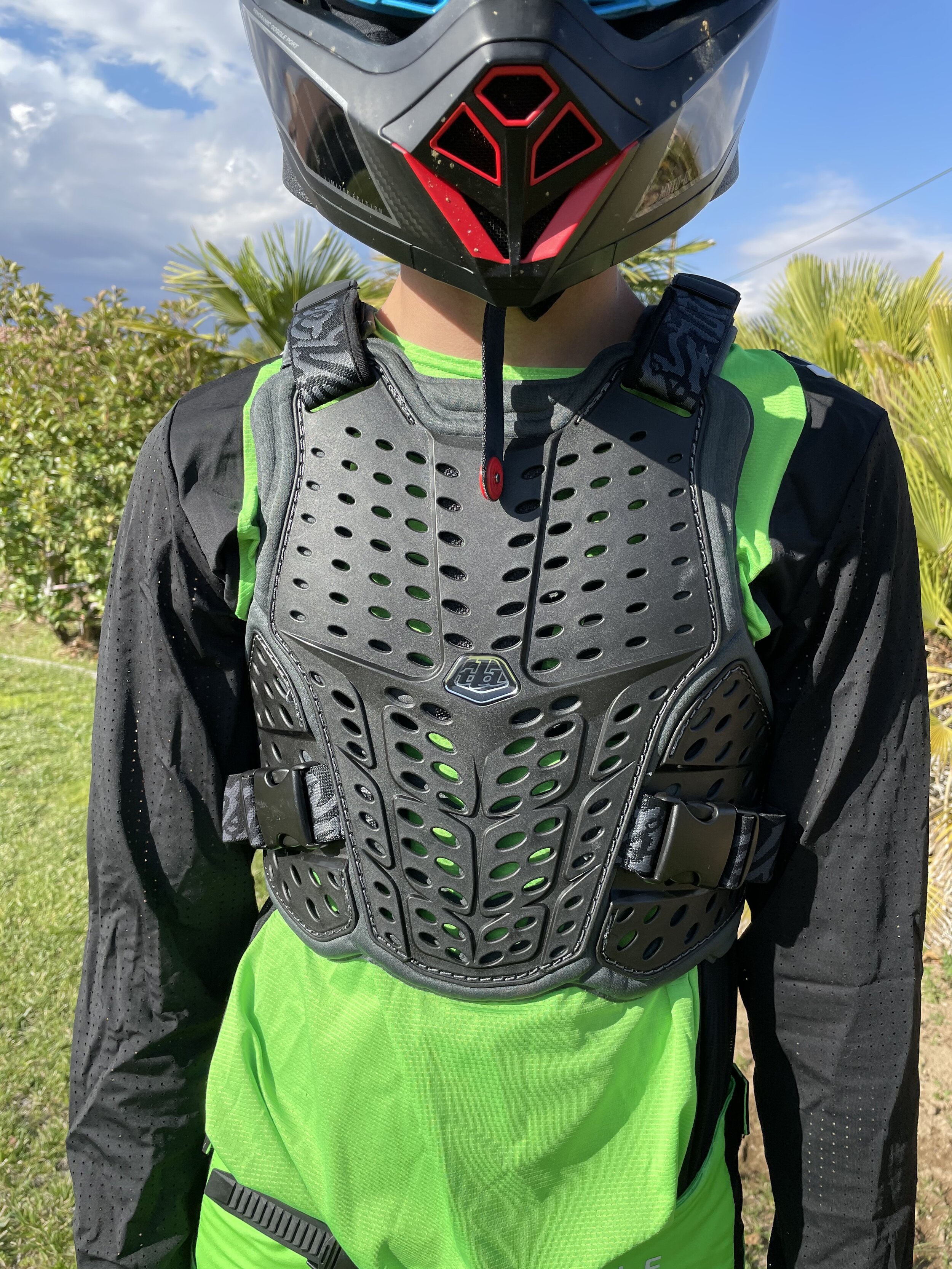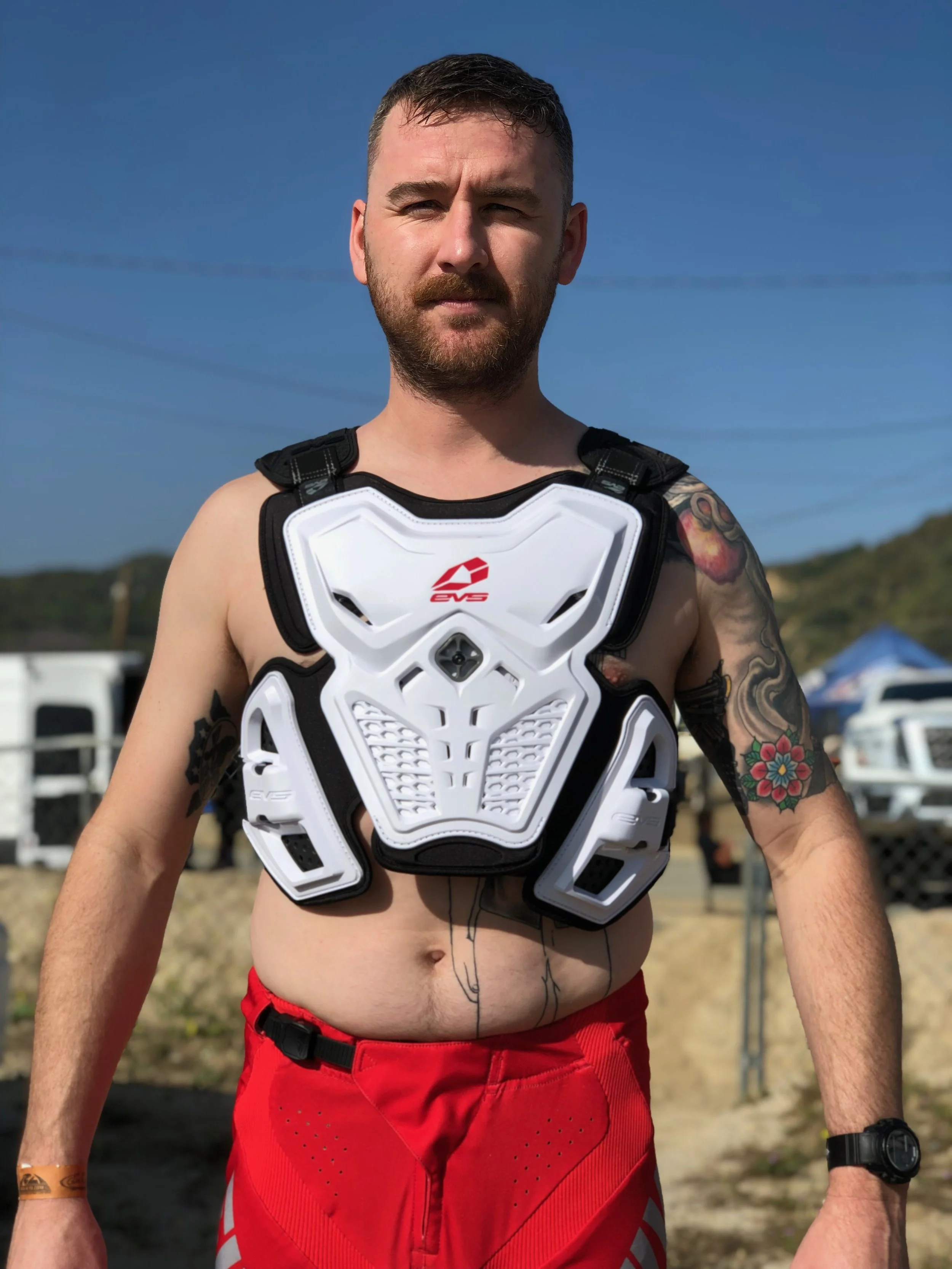I haven’t tested much Troy Lee Designs protection and was looking for another chest protector to test and came across the Rock Fight CE chest protector and was wearing it every time I went out on the track before I injured my knee. I managed to get a a solid month in the Rock Fight and came away with these thoughts.
The Rock Fight has a CE EN14021 Stone Shield certification front plate that helps protect from roost and other lofted debris. What is more impressive is that it has helmet technology inside which is some advanced integrated EPP in key impact zones like on the chest and spine. The Rock Fight has form fit side flex plates, fully adjustable fore/ aft shoulder straps and removable shoulder pads that allow a wide variety of neck braces to fit comfortably. Even though I am not a neck brace guy I did have an Atlas Air and Leatt 5.5 to strap on and see if it restricted any of my movements, which it didn’t. Flexible D30 back insert exceeds C.E. EN1621 Level 1 for impact absorption. Another feature of the Rock Fight is the ventilated protective plates coupled w/engineered channeled bio-foam that can allow increased airflow.
After wearing the Rock Fight CE through some of California’s warmer spring days I can tell you that it’s a full coverage chest protector that encompasses more area than that of an Alpinestars A-1 as well as the Fox Raceframe. The Rock Fight CE is built to withstand some impacts and that means that it’s going to be bulkier and warmer than those that don’t have the D30 built into it. However, even though the RockFight CE is warm, it doesn’t feel that bulky when riding. I will say that the key thing to making it feel less bulky is to get the straps as snug as you can around the torso. Once I figured that I needed to run the straps tighter around my waist, the RockFight CE was more comfortable for me. I tried wearing it under my jersey but quickly found out that it was too bulky for my taste to be an under-the-jersey protector. This was going to be strictly over the jersey protection which I am fine with, but just know going in that you might have to get some matching TLD gear to humor the motocross fashion gods. The buckles on the side straps are durable and for my 5’11 170 pound frame, the M/L sizing was adequate. Even though I like having the peace of mind of having CE protection, it does get me warm during a longer moto on hotter days. I had my son try it for a couple motos and he complained of being too hot with it on.
Overall this is not a roost protector and is a chest protector so understand that it covers and protects better than your average roost protection. With that added safety of the D30 in the back of the RockFight it makes for a more comfortable feel than just having hard plastic resting on your back, but just know with D30 comes heat. My guess is that this TLD RockFIght protector would be best for a rider in cooler climates or a rider that is more of a man than I am in hotter temps.








